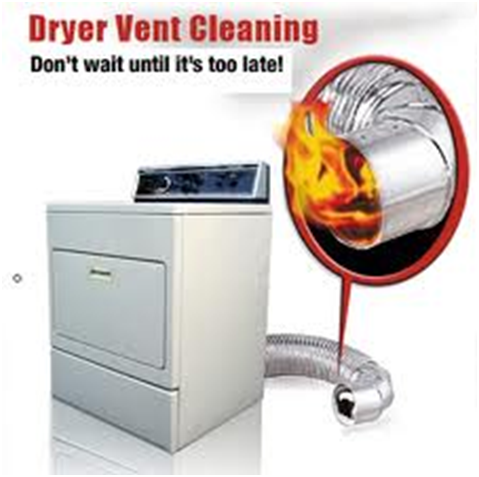The Guelph/Eramosa Fire Department would like to remind all residents that the leading cause of dryer fires in homes is the lack of dryer maintenance.
 Follow these tips to make your home safer.
Follow these tips to make your home safer.
- Have your dryer installed and serviced by a professional.
- If you are installing your own dryer, follow the manufacturer’s instructions before installing the dryer vent. Determine the straightest and most direct venting path to the outdoors to reduce the likelihood of lint accumulation in bends or elbows.
- Use rigid or flexible metal ducting for venting to the outdoors. Plastic or metal foil ducts are more prone to kinking, sagging and crushing, which leads to lint build-up. Plastic ducting is also more prone to ignition and melting.
- Clothes dryers located in closet-type spaces or completely-enclosed rooms (e.g. in apartments) should have sufficient incoming air for proper operation (see manufacturer’s instructions).
- Follow the manufacturer’s instructions regarding the safe use of the dryer.
- Inspect and clean the lint screen after each load of laundry. The build-up of lint can lead to a fire. Regularly remove lint from metal ducts and exhaust vents. The inside of the dryer cabinet should be cleaned as per manufacturer’s instructions.
- Regularly inspect the air exhaust to ensure it is not restricted and the outdoor vent flap opens when the dryer is operating.
- Turn the dryer off if you leave home or when you go to bed.
- Keep the area around the dryer clear of items that can burn.
- Overload the dryer.
- Exhaust the dryer indoors.
- Dry materials or fabrics that have been saturated by chemicals, oils or gasoline (e.g. mops and towels and cloths saturated with wax, flammable solvents or vegetable oils). Even after washing, these substances can start a fire during the drying cycle.
- Dry natural or synthetic rubber, rubber-coated sneakers, galoshes, foam pillows or any garment with foam padding (e.g. blouses with shoulder pads, bras, bicycle shorts)
- Dry garments that have been cleaned with dry-cleaning fluid.
- Use a dryer without a lint filter, or with a lint filter that is loose, damaged or clogged.
Install and maintain working smoke alarms on every storey and outside all sleeping areas of your home.
It is now the law in Ontario to install carbon monoxide (CO) alarms in your home. If you have a fuel-burning appliance or an attached garage, you must have a working CO alarm adjacent to each sleeping area of the home.
Develop a home fire escape plan and practise it with all members of the household.